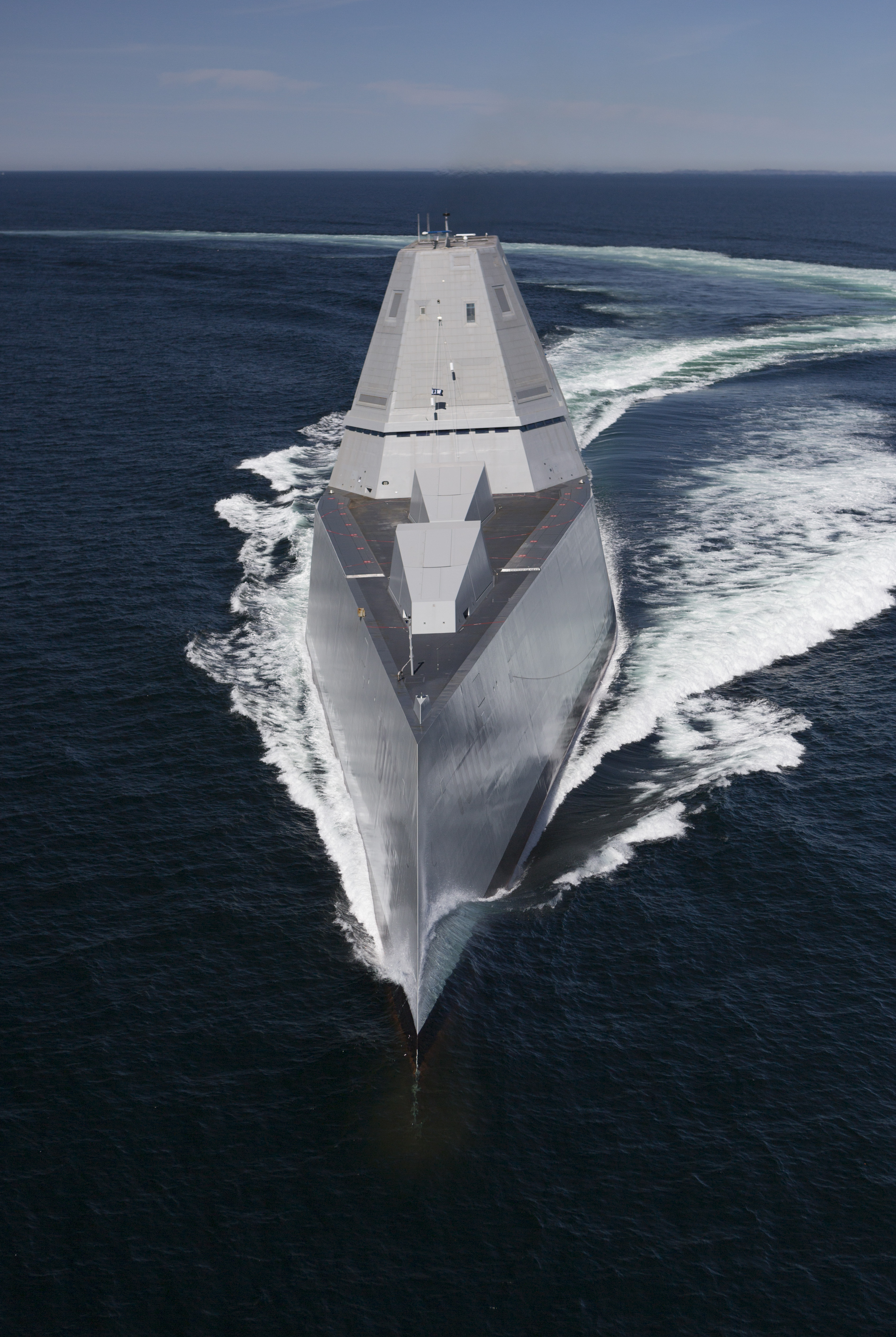
This post has been updated with a clarification comment from ASNE’s Richard White.
WASHINGTON, D.C. — The Navy’s next large surface combatant will probably look more like the futuristic Zumwalt class of guided-missile destroyers than fleet’s current workhorse class of Arleigh Burke destroyers, the program executive officer said.
Navy and industry designers are talking about increased payloads, increased computing and increased design flexibility when considering the possible capabilities of the fleet’s next large surface combatant, Rear Adm. William Galinis, the Navy’s program executive officer for ships, said during the American Society of Naval Engineers’ annual Technology, Systems & Ship symposium on Tuesday. Designers also have to consider that the Navy now plans to operate in an increasingly contested environment, which means taking into account how adversaries will see the new ship class on radars.
“The signature aspect of it, what does that do to the shaping of deckhouse hull form. I will tell you, not to predispose anything, but I think in the end, you know, it’s probably going to look a lot more like a DDG-1000 than a DDG-51 if I had to say so,” Galinis said. “But there’s still a lot of work to kind of go do in that area.”
Galinis was speaking during the opening keynote address at the 2019 TSS conference. Rear Adm. Lorin Selby, the Navy’s chief engineer and deputy commander for ship design at Naval Sea Systems Command, joined Galinis during the keynote.
The Navy had planned to buy the first of its new class of large surface combatant in 2023, but Galinis said the Navy has since pushed back the start date. USNI News first reported the Navy now is looking at awarding a contract in Fiscal Year 2025. The current Arleigh Burke-class multi-year contract expires in 2022.
By pushing back the production timeline, Galinis said the Navy can refine its requirements now and incorporate feedback from industry and current programs to help improve the ship design and control costs.
As an example, Galinis said the Navy continues learning from the DDG-1000 program. The Navy is applying a lot of acquisition and production lessons learned from the Zumwalt class experience to the Columbia-class submarine program, Galinis said.
“When you start thinking about large surface combatant, that’s going to be a key element of that acquisition strategy,” Galinis said.
At the same time, the current emphasis on developing new ships is increasing the demand for ship design expertise, Selby said. He wants to establish a constant design workflow so the Navy doesn’t lose talent during the years between ship major designs.
“There’s a lot of design work across the enterprise,” Selby said. “We really have to work hard to build that talent base back up.”
When introducing Galinis and Selby, retired Navy Capt. Richard White, the TSS 2019 committee chair, said Secretary of the Navy Richard V. Spencer had requested that conference attendees not ask questions about aircraft carriers.
During his keynote address highlighting recent advances naval ship design, Galinis merely said, “the one new design over the last couple of years is obviously the Ford-class carrier, but we’re not going to talk a lot about that over the next couple of days.”
During the second day of TSS 2019, White provided clarification to his previous comments regarding the discussion of aircraft carriers. When planning this year’s conference, the decision was made to focus on surface ships. There was no direction from the Navy regarding asking about aircraft carriers.
“I did not receive any direction from the Secretary of the Navy,” White said.





